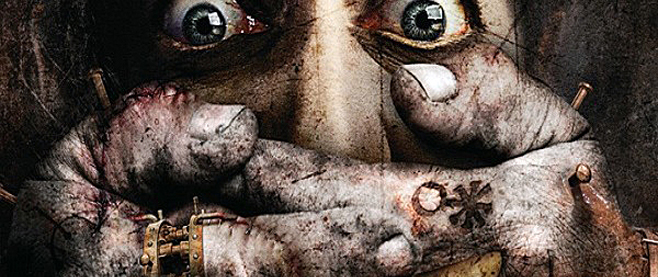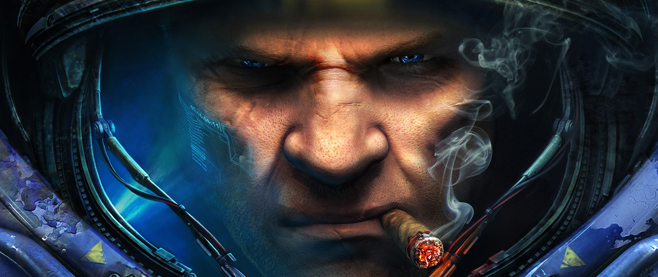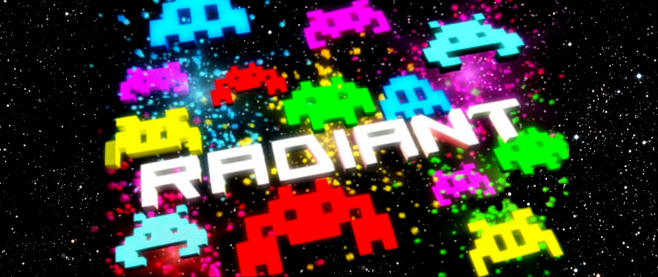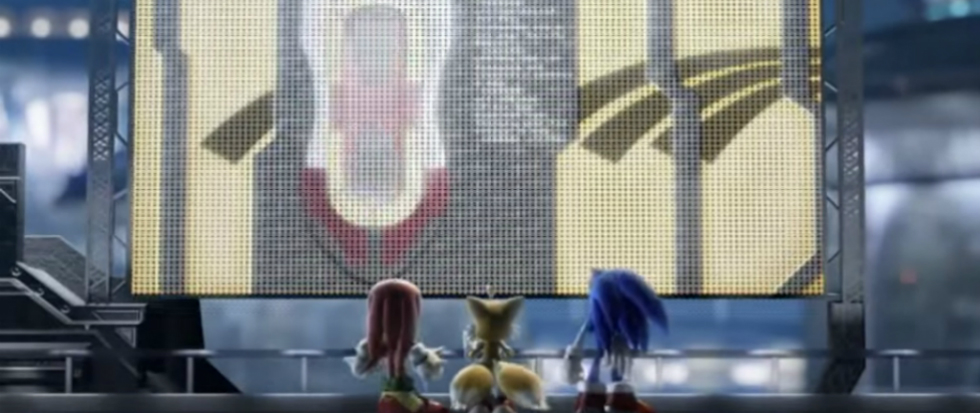
Sonic Riders Made Me Feel Like a Champion
Perhaps I was spoiled by my beloved TrickStyle, but I was unreasonably ecstatic when Sonic Riders got announced. I remember analyzing the debut trailer again and again to see what else I could learn: “Why is that robot chasing Tails? That level looks different from the rest. And is that…Dr. Eggman?”
Sonic Riders, which had its 10-year anniversary on Sunday, February 21st, was an ambitious direction for the franchise, trading in feet and karts for hoverboard racing. Harnessing a modern-meets-futuristic motif with spunk – which the soundtrack’s energetic, techno-driven themes nailed – Sonic Team was diligent about delivering the “Air Rider” concept as a creative treatment of the cartoon racer.
Sonic games were my gateway into speedrunning some years ago, and Riders’ fast-paced gameplay, with its potential for long-term mastery, made competitive play appealing. I took pride in the impressive feats I accomplished then. The unforgiving ‘High Booster’ gear made it especially rewarding, granting dramatically enhanced speed boosts at the cost of a halved gauge. But as you learn to navigate this punishing drawback by exploiting track features, the payoff from combo linking is incomparable. Playing Riders with this focus felt almost like unlocking Super Monkey Ball’s Master levels; a game I already found to be rewarding became more so, and my appreciation for the sound, inventive design grew.
Gameplay mechanics revolved around an air system, where key actions – drifting, boosting, dropping tornadoes – depleted a central gauge. The trick system was well-explored and in line with snowboarding titles of the day, calling for a hold-and-release mechanism that granted control to execute flips and grabs. It meaningfully played into the track design, as your technique would have a direct bearing on the route you would take after a trick ramp.
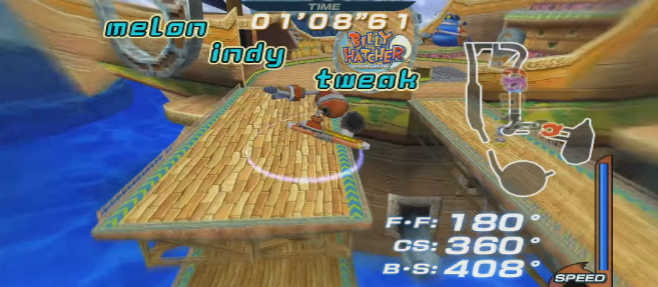
Two major characteristics distinguished Riders. Rather than having positions determined by prior performance or a reverse-order arrangement, the starting line was a free-for-all timing exercise. Counting down from five, a bright marker ran along the ground toward an electrified start gate, the idea being to build up speed and launch as the field lifted. The second key was rethinking the traditional use of slipstream: leaders left trails of wind for tailing players to surf and perform tricks in, sometimes transporting you to higher routes. These non-derivative moves gave the game its own extreme-sports feel in keeping with an overriding commitment to accord freedom and control. It went against singular approaches of earlier cartoon racers, possessing a learning curve and skill ceiling that not many counterparts of its time can boast.
Branching paths gave tracks dimension, and prompted spontaneous decision-making, which was aided by the design choice of character-specific access. Certain gear, like the Grinder skates, granted secondary abilities, and plenty of other mods allowed you to tweak your play style for challenging properties or distinct skills (e.g., the zippy Hovercraft is too unwieldy for trick combos). In reality, this exploration of varied track design was paved for by the trio-partner system of Sonic Heroes, and with its support, well-rounded design and scope became Riders’ hallmarks.
While not using a strict day/night system, main tracks essentially had twins with differing landscapes. Egg Factory contrasted Green Cave’s winding design and the waterfall-leaping, rainbow-riding gimmicks of Splash Canyon, featuring tight hairpins and fire pits that matched the industrial theme. Ice Factory had drastic design changes – namely, an open ventilation area with giant fans, elevator shafts and slippery roads – and its strength came from the array of path options and dispersed character advantages. Night Chase used the same metropolis setting as Metal City but with an altered initial layout of a tunnel where police cars would continually mobilize, making it a fun combo-building test for Power characters.

Babylon Garden had two parts bridged by a flight sequence, memorable for its atmosphere, wide curves and active conditions – jet fighters destroyed chunks of the track and created an enormous wind tunnel for players to surf. Dark Desert, one of the game’s best, furthered Sand Ruins’ idea of a desert expedition to discover lost history. Walls of sand part after the first jump, revealing a tricky route to a busy cylindrical chamber with imposing bird-like artifacts. There, players would ride along walls (later a fundamental idea for the sequel) as if in a bowl, before converging on a mystic room that teleported you to emptied streets for retracing your way to the coliseum.
My personal favourite, though, is SEGA CARNIVAL. After perfecting the occasionally trying Mission Mode, seeing the track flyover for the first time left me in a tizzy. My excitement soared when I saw an entire scene based on Billy Hatcher – one of my all-time favorite SEGA games – then to be launched from an egg cannon to roll along a coaster in a NiGHTS-themed courtyard. It was a wonderful feeling. The entire track felt like taking a fast-track route through an interconnected museum with playful vignettes, and the unlock itself (i.e., SEGA CARNIVAL and SEGA ILLUSION as a set) is among the most rewarding in my gaming history.
Sonic Riders offered a lot to me as a longtime Sonic and SEGA fan. Crazy fan service, for one: Aiai, NiGHTS and Ulala as unlockable characters, two full-blown SEGA-themed levels, and vehicles that memorialized other SEGA IPs. From a competitive standpoint, the game became something of an outlet, from which I repeatedly derived the thrill of personal achievement. And over time, I picked up on a lot of tricks, like understanding air conservation and boost windows, knowing when to grab the 100-Ring Capsule (one on every track), discovering a hidden shortcut in White Cave, breaking from flight paths for faster routes, and learning that boost pads are an expert’s enemy.
The sequel built upon core ideas with some success (discussion for another day), yet to me, the original is a more mechanically sound, rewarding racer. It’s sad that its unique energy and experimental design weren’t recognized, as Riders certainly lived up to what it set it out to do. And 10 years later, I still freely call it one of my favorite Sonic outings.


